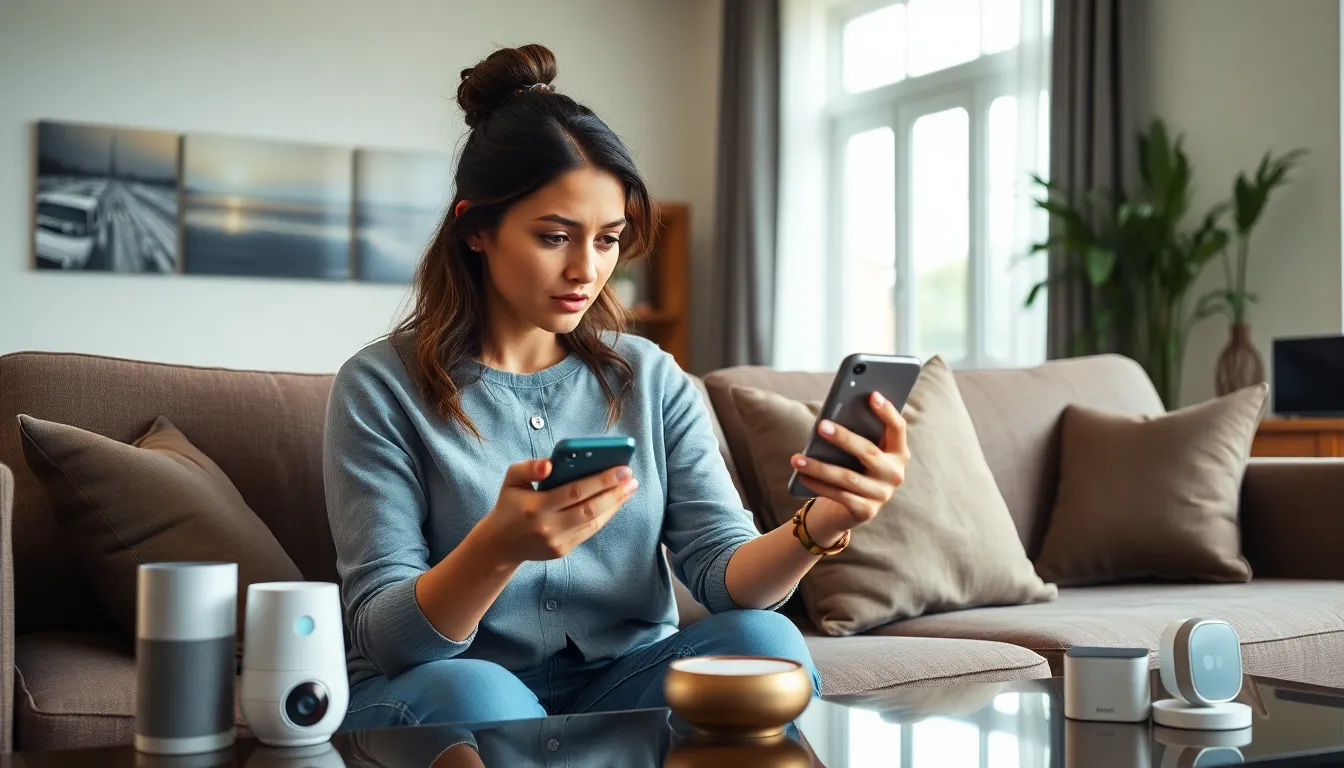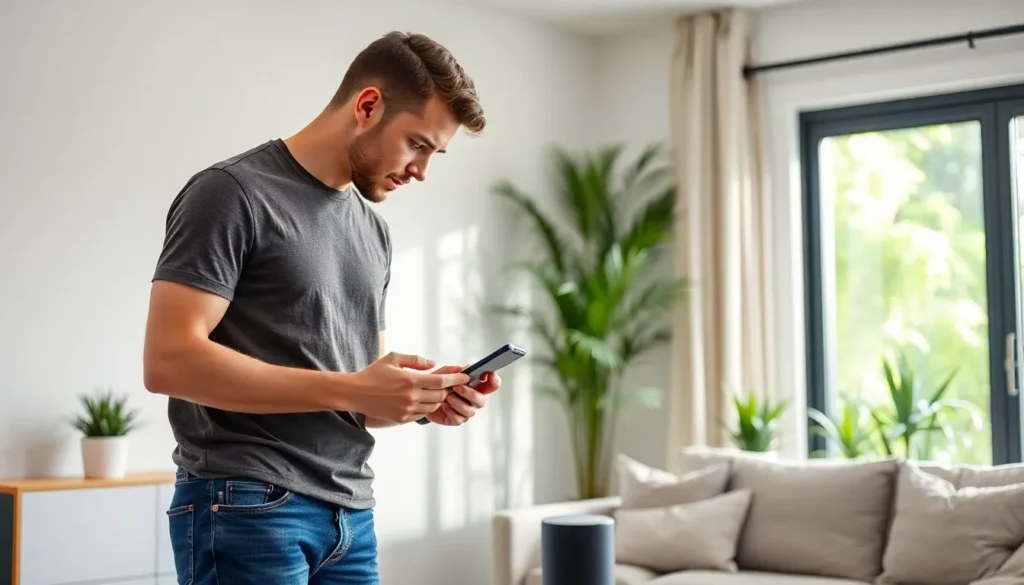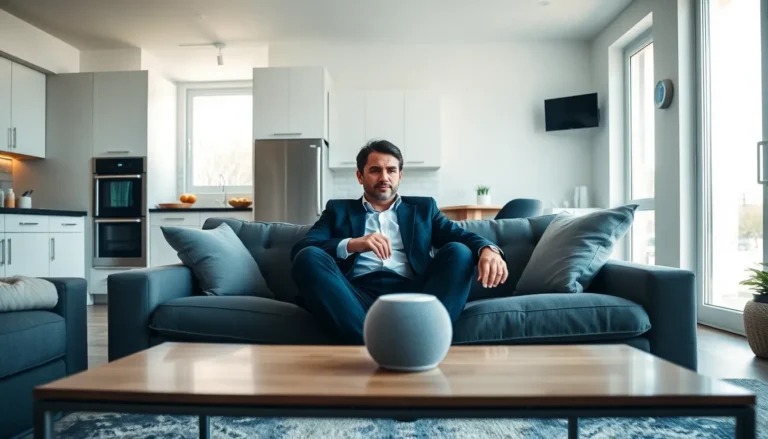As smart home technology becomes increasingly popular, many homeowners are eager to embrace the convenience it offers. However, diving into the world of smart devices isn’t without its challenges. From compatibility issues to security concerns, navigating this complex landscape can be daunting for even the most tech-savvy individuals.
Understanding these challenges is crucial for anyone looking to enhance their living space with smart technology. It’s not just about convenience; it’s about ensuring that devices work seamlessly together while keeping personal data safe. By addressing these issues, homeowners can make informed decisions and enjoy the full benefits of a smart home without unnecessary headaches.
Table of Contents
ToggleOverview of Smart Home Challenges
Smart home technology offers convenience and efficiency, yet integrating these devices presents several challenges. Compatibility issues rank among the most significant hurdles. Devices from different manufacturers often lack interconnectivity, which complicates seamless operation. Homeowners may find themselves with devices that cannot communicate effectively, wasting time and resources.
Security concerns also pose a substantial challenge. Smart home devices, connected to the internet, can be vulnerable to cyberattacks. Data breaches can jeopardize personal information. Ensuring robust security measures, such as strong passwords and regular software updates, becomes essential for protecting the smart home environment.
Another challenge is the complexity of setup and management. Many smart home devices require specific configurations, which can overwhelm users. The learning curve for navigating multiple apps and platforms often discourages homeowners from fully utilizing their technologies.
Interference from other devices can disrupt a smart home’s functionality. Wi-Fi networks may struggle to maintain stable connections when multiple devices operate simultaneously. Homeowners might need to invest in stronger routers or network extenders to address this issue.
Finally, privacy concerns arise as many smart devices collect data on user behavior. Homeowners must navigate the balance between convenience and privacy, often needing to review data-sharing policies and device permissions. Understanding these challenges helps homeowners work effectively within the smart home ecosystem.
Security Risks

Security risks represent a crucial challenge in smart home technology. Homeowners must understand the implications of integrating connected devices into their living environments.
Data Privacy Concerns
Data privacy concerns significantly affect smart home users. Smart devices often collect extensive data on user behavior, including personal habits and preferences. This information can be stored on cloud servers, which may be vulnerable to unauthorized access. Homeowners face challenges in managing consent and understanding data usage policies. Without proper safeguards, sensitive information may be misused or sold to third parties, leading to breaches of trust and potential identity theft.
Vulnerability to Cyber Attacks
Vulnerability to cyber attacks poses a severe threat to smart homes. Many connected devices lack robust security measures, making them easy targets for hackers. Weak or default passwords can facilitate unauthorized access, enabling cybercriminals to control devices or harvest personal information. A single compromised device can lead to network-wide breaches, exposing users to risks such as surveillance or financial theft. Regular updates and the use of strong, unique passwords mitigate these risks, but homeowners often overlook these essential security practices.
Compatibility Issues
Compatibility issues pose significant challenges when integrating smart home devices, as products from various manufacturers often struggle to work together seamlessly. Understanding these obstacles is vital for homeowners seeking a cohesive smart home experience.
Fragmentation of Devices
Fragmentation of devices occurs when multiple smart devices from different brands use unique ecosystems, creating barriers to interconnectivity. This lack of standardization leads to situations where devices, like smart speakers and lighting systems, cannot communicate effectively. Homeowners might find it frustrating to manage different apps and interfaces for controlling individual brands. For example, a smart thermostat from one manufacturer may not integrate with a security camera from another, complicating system synchronization. As a result, users sometimes require additional hubs or bridges to unify these devices, adding complexity and cost to the smart home setup.
Standards and Protocols
Standards and protocols serve as the foundation for device communication in smart homes. Unfortunately, the absence of universally accepted standards results in communication issues between devices. For instance, Wi-Fi, Zigbee, and Z-Wave are among multiple communication protocols available, each with its strengths and weaknesses. Certain devices may only support one protocol, limiting users’ choices for compatible devices. Home automation systems reliant on a specific protocol might require costly replacements or upgrades when integrating new devices. The lack of a singular standard leaves homeowners at the mercy of manufacturer specifications, making it essential to research compatibility before purchasing new smart devices.
User Experience Challenges
User experience in smart homes presents significant hurdles, particularly regarding setup complexity and accessibility for all users.
Complexity of Setup
Setting up smart home devices often presents a steep learning curve. Users may encounter intricate app interfaces requiring technical knowledge. Configuration processes can vary significantly across devices, making it challenging to achieve a seamless setup. Multiple applications may be necessary, leading to frustrating experiences when controlling devices. Additionally, pairing devices with existing home networks might involve navigating numerous steps, causing users to abandon their smart home ambitions. Homeowners frequently turn to online forums or customer support for assistance, adding to the overall setup time and complexity.
Accessibility for All Users
Accessibility represents another crucial challenge in user experience for smart homes. While smart home technology aims to enhance convenience, its usability can be limited for certain demographics, including older adults or individuals with disabilities. Voice commands and touch interfaces may not cater to all users, resulting in frustration. Customization options might remain inadequate, forcing users into generic settings that do not accommodate unique needs. Additionally, devices requiring app-based control could alienate those who prefer traditional methods. Ensuring intuitive design and inclusive features is essential for fostering a positive user experience across diverse groups.
Cost Implications
Cost implications play a crucial role in the adoption of smart home technology. Homeowners encounter both initial investment and long-term maintenance costs that can significantly impact their budgets.
Initial Investment
Initial investment refers to the upfront costs associated with purchasing smart devices and required infrastructure. Smart home systems typically demand an assortment of devices such as smart speakers, thermostats, security cameras, and smart lighting. Prices for these devices can vary widely. For example, basic smart bulbs may cost $15 each, whereas high-end security cameras can range from $100 to $300 or more. Homeowners might spend between $500 and $2,500 on a comprehensive setup, depending on the desired features and quantity of devices. Additionally, installation costs can arise if professional help is necessary, potentially adding hundreds of dollars to the total expense.
Long-Term Maintenance
Long-term maintenance involves both operational costs and device upgrades. Operational costs include electricity usage from smart devices, subscription services for cloud storage, or enhanced features, which can amount to $10 to $30 monthly. Device upgrades also become necessary as technology evolves. Homeowners must be prepared to replace or upgrade components every few years, often incurring expenses ranging from $100 to $500, depending on the devices and software requirements. Frequent software updates and security enhancements also demand attention, with some manufacturers charging fees for premium support or advanced functionalities. Understanding these long-term maintenance requirements helps homeowners anticipate ongoing expenses associated with their smart home systems.
Navigating the challenges of smart home technology requires careful consideration and planning. Homeowners must prioritize compatibility and security to create a cohesive and safe environment. As they integrate various devices, understanding the implications of data privacy and the potential for cyber threats is crucial.
Moreover, addressing user experience and accessibility ensures that everyone can benefit from smart technology. While the costs associated with smart home systems can be significant, informed decision-making can lead to a more enjoyable and efficient living space. By tackling these challenges head-on, homeowners can fully embrace the advantages that a smart home has to offer.



